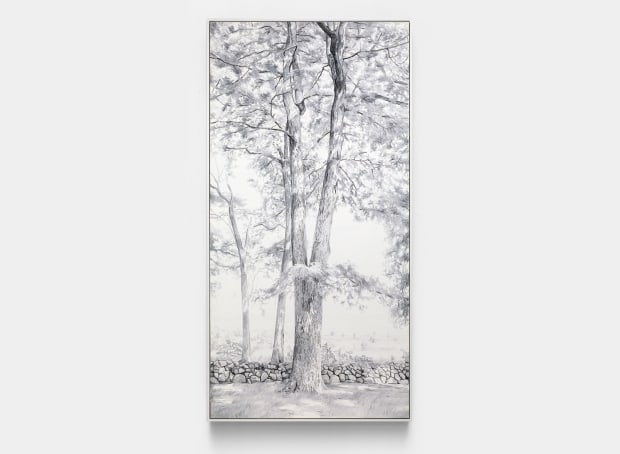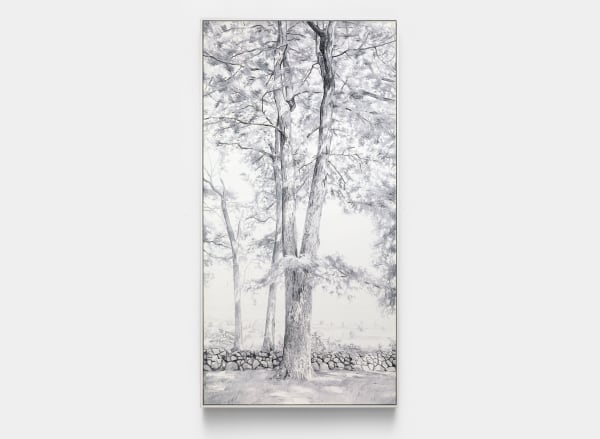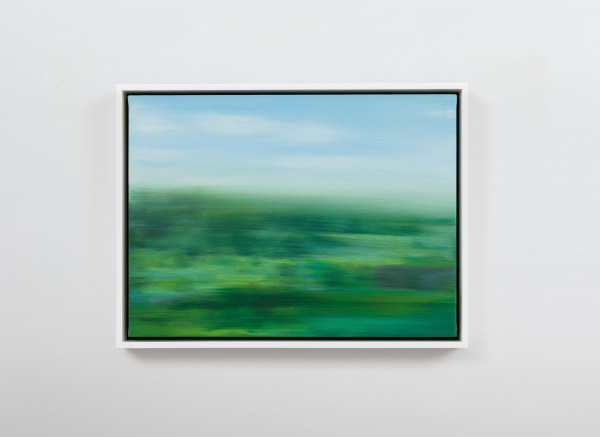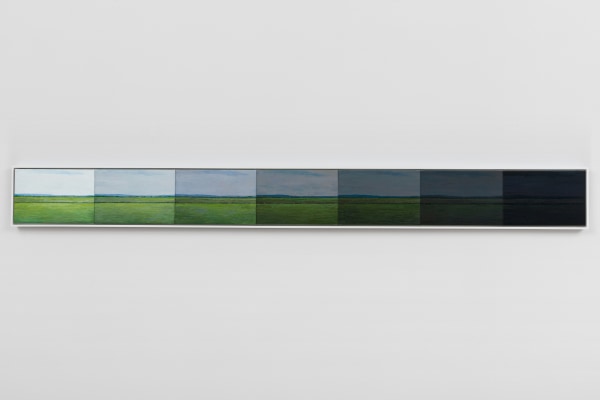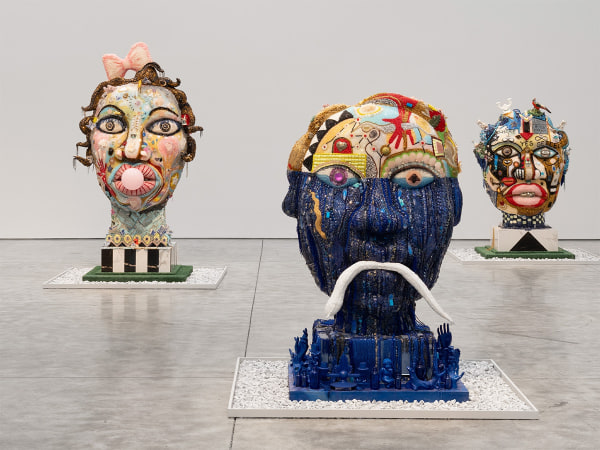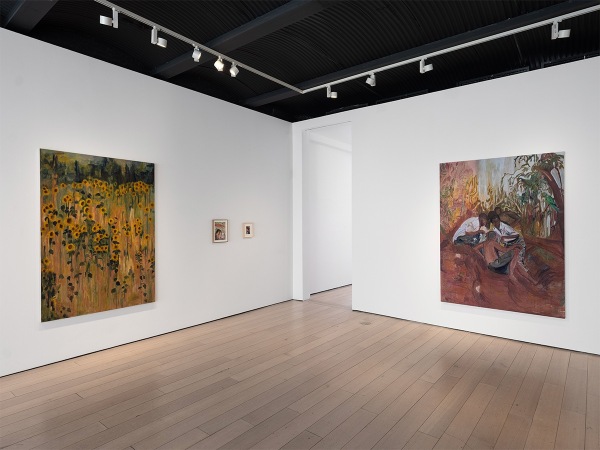Cynthia Daignault: As I Lay Dying
Past exhibition
-
-
Cynthia Daignault’s (b. 1978) first solo exhibition at the gallery explores the subject of Gettysburg National Military Park to propose a contemporary response to the genre of history painting. On view through January 8, 2022, the exhibition expands on themes explored in the artist’s earlier Light Atlas and Elegy series, investigating concepts of monument, memory, and the shifting experience of the natural world.
-
As I Lay Dying includes wide-ranging depictions of the battlefields and woodlands of the park, as well as paintings of text drawn from Lincoln’s historic address, and ghostly nocturnes of Civil War monuments. Daignault’s approach is a rumination on the meaning of site and time—time elapsed since the battle, time spent walking its fields, and time shared between the viewer and the work.
-

-
History painting, for Daignault, is an act of poetry. In this, her approach recalls the work of Felix Gonzalez-Torres, who engaged with political history through the creation of quiet, specific and powerful metaphors. Just as in an imagist poem, each work here is a concrete, uncluttered response to the pathos of Gettysburg. As I Lay Dying explores personal and political American paradoxes—beauty and horror, love and cruelty, idealism and sin—and its works formally reflect these binaries—north and south, black and white, warm and cool. One work in the exhibition is stereoscopic; two panels depict left and right-eye views of the memorial cemetery, exploring concepts of parallax, shifting perspective, and multipartite narratives. These oppositional dualities ground the show, rooted in the central contradiction between the land and its historical context: Gettysburg has a banal and prosaic landscape that belies the bloody battles fought on its soil.
-

-
For Daignault landscape is witness, and she draws parallels between the environmental setting and the mechanical act of seeing. Her investigation into optics further acts as a metaphor for the polarities at the heart of American life and the reverberations of historical trauma. Gettysburg (witness tree), depicts a scene from her walks in the park: one of the few remaining civil war witness trees—a tree standing at the battle and still alive today. In the lineage of artists such as Richard Long, Daignault asks us to walk with her in order to learn how, or from which vantage point, we might better understand the past.
-

-
Works
-
About the Artist
 Photo: Curran Hatleberg, courtesy of Cynthia Daignault
Photo: Curran Hatleberg, courtesy of Cynthia Daignault -
Explore
-

vanessa german: GUMBALL—there is absolutely no space between body and soul
April 3 – May 10, 2025 509 West 27th Street, New York, 514 West 28th Street, New YorkKasmin presents its second solo exhibition of new work by artist vanessa german, which debuts related bodies of sculpture across two of the gallery’s spaces in New York. The exhibition deepens german’s singular approach to sculpture as a spiritual practice with the power to transform lived experience. Both series comprise mineral crystals, beads, porcelain, wood, paint and the energy that these objects bring to life to form monumental heads and figures in the act of falling. Together, each body of work envisions the transformation of consciousness necessary to imagine a new world. -

Helena Foster: Time Honoured
April 3 – May 3, 2025 297 Tenth Avenue, New YorkThe first New York solo exhibition of London-based painter Helena Foster features new oil paintings on linen, paper, and vellum that express the artist’s lyrical approach to painting as an accumulation of cultural and generational wisdom. Foster draws freely from literature, theater, film, Igbo oral tradition, and religion, achieving a dreamlike aura of mystery in dynamic compositions ambiguously set between thick vegetation and the built environment.
-


